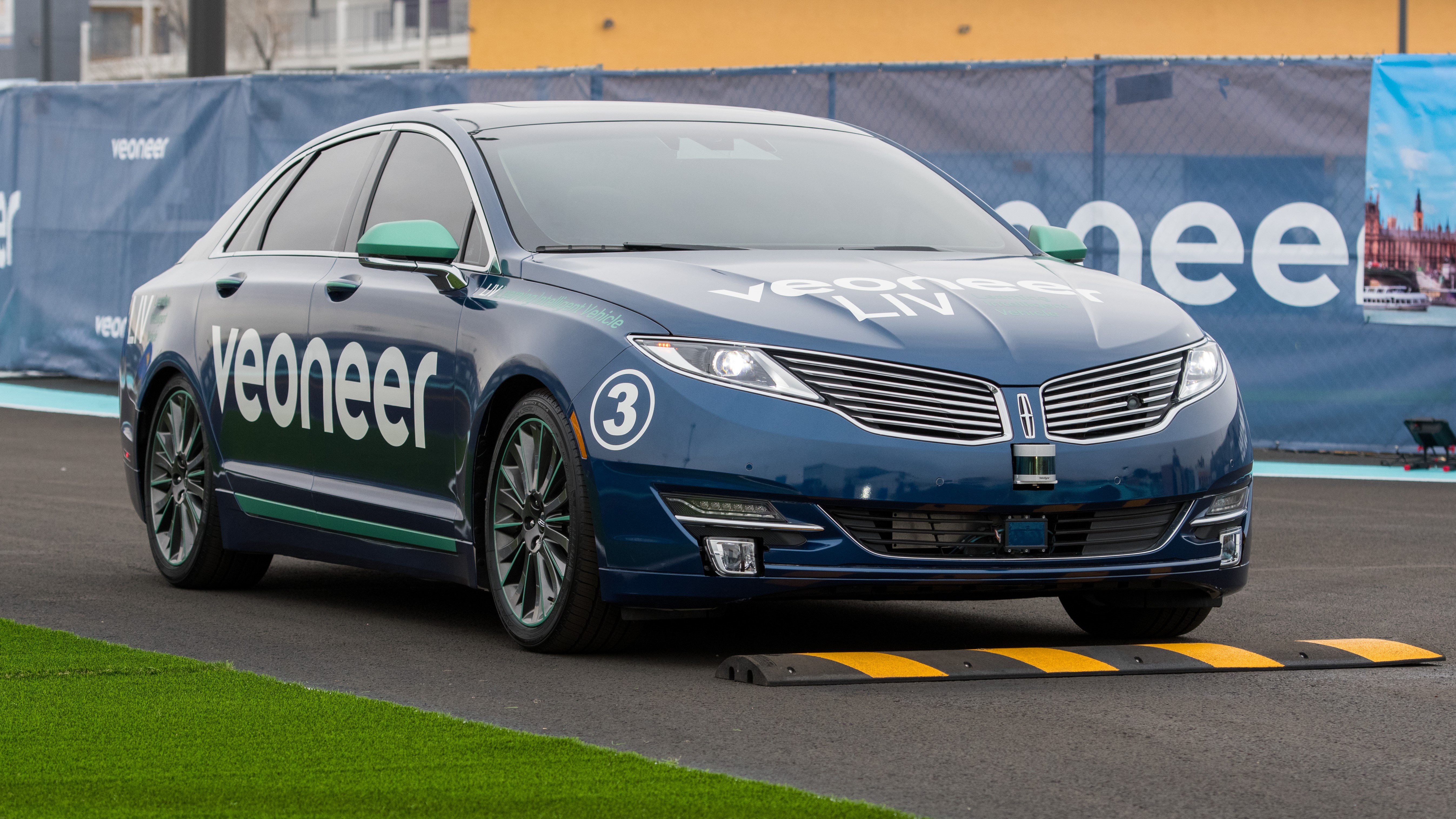This autonomous car test at CES shows what life will be like in 2030
Self-driving cars with a human touch

Are you ready for the year 2030? Most of us can hardly imagine what life will be like then, although we can probably set aside flying cars and time travel for now.
At CES 2019, a company called Veoneer showed me what the future will be like, and it might be an interesting ride to say the least.
First, I should mention that the technology is still in development. Everything worked fine, but what made me wonder the most about where this technology is heading has nothing to do with the sensor technology Veoneer makes. It has everything to do with human drivers. That’s one thing that’s easy to predict about the future: human drivers will still be involved.
A racetrack for robots
My test took place on a course behind the convention center in Las Vegas. The lot looked a bit like a racetrack for robots, with brightly painted lane markings on black asphalt. The car, splashed with the Veoneer logo and the name LIV (which stands for Learning Intelligent Vehicle), could do more than just drive on its own. I slipped into the backseat to monitor what was happening.
The test was quite complex. First we were chased down by a Veoneer security car acting like a police interceptor. The driver, who had obviously never ridden in an self-driving car before, did not quite understand what to do at this point. (He was supposed to grab the wheel and pull over to the side.) We braked and the police chaser 'sped' slowly past.



During the autonomous driving portion of the test, the driver braked suddenly at a stop sign – it’s not sensor-related, unless you count human sensors like our eyesight and reaction time.
Another segment had to do with night vision. I was impressed at how much effort Veoneer put into this portion, because we drove into a long garage – about four or five blocks of darkness. We couldn’t see anything except some fog. As the car crept along, again in autonomous mode, an 'actor' appeared at the side of the garage and the car slowed and avoided an accident.
Sign up for breaking news, reviews, opinion, top tech deals, and more.
Around an area with mock restaurants and retail shops, the Veoneer rep explained how they would deal with distracted driving scenarios, The car blasted a song by Elvis as the driver was instructed to look for objects at the side of the road. While driving, it was obvious (at only about 7mph) that we were in no danger at all, and yet you could sense that the driver was not paying attention. In autonomous mode, he was able to look to the side of the vehicle easier. I liked how Veoneer proved the point that robotic cars are always vigilant and never get tired.
Another segment had to do with operating the vehicle remotely. Using his phone, the rep showed how he could control the car. This is known as Level 4 automation, which means you do not necessarily need to be in the car. On the phone the rep used virtual joysticks for steering and speed. Tesla already offers a mode to summon your Model S sedan from the garage without having to be seated in the car, but the Veoneer test seemed more like operating a drone.



As you can surmise, I had a lot of questions about how all of this will unfold. Another Veoneer rep mentioned that fully autonomous cars would debut around 2030, and only a small number of drivers will own one. There are a lot of steps between now and then. Actors on the course behaved perfectly as the autonomous car drove past. The mock police car didn’t seem to mind that we stopped in the middle of the road and didn’t pull over. There was plenty of room for the person in the night vision tunnel to step to the side as we drove silently past him.
In 2030, I’m guessing people walking on a street corner won’t be so scripted, and the police will not be so accommodating. In a scenario on a dark road, I’m not sure how a car will determine whether a pedestrian has enough room at the side of the road. Cars will connect to the roadway, other cars, the intersections around us and even the tunnels, but probably not a dirt road.
Human weakness
My biggest concern is about humans, however. We have around 11 years to figure this out but human drivers don’t always seem to know how to respond to autonomous cars. We panic a little. The driver during my test did not know when to brake and when to let the car brake.
This will be normal, even in 2030. Human drivers will need a lot of training, an abundance of feedback (but not too much feedback), and we’ll need many precautions in place. It will be an exciting time seeing how this all develops, that’s one thing we know for sure.
- Check out all of TechRadar's CES 2019 coverage. We're live in Las Vegas to bring you all the breaking tech news and launches, plus hands-on reviews of everything from 8K TVs and foldable displays to new phones, laptops and smart home gadgets.

John Brandon has covered gadgets and cars for the past 12 years having published over 12,000 articles and tested nearly 8,000 products. He's nothing if not prolific. Before starting his writing career, he led an Information Design practice at a large consumer electronics retailer in the US. His hobbies include deep sea exploration, complaining about the weather, and engineering a vast multiverse conspiracy.